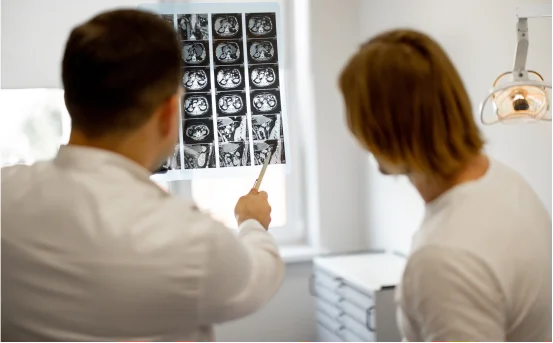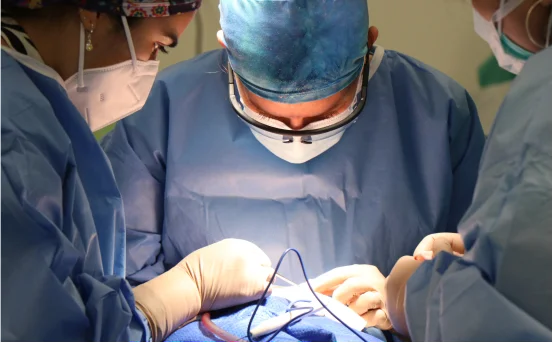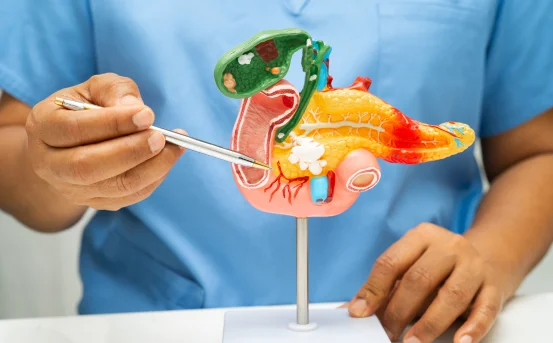Diagnosis of ureteral reimplantation is a surgical procedure performed to correct issues related to the ureters the tubes that carry urine from the kidneys to the bladder. Most commonly, this surgery is used to treat vesicoureteral reflux (VUR) or ureteral obstruction, particularly in children, but adults may also require it. Before considering ureteral reimplantation surgery, an accurate and detailed diagnosis is essential.
Ureteral reimplantation is commonly performed in children but can also be indicated in adults suffering from certain congenital or acquired urinary tract conditions. The goal of this surgery is to correct the positioning or function of the ureters to ensure proper urine flow and prevent backward flow into the kidneys also known as vesicoureteral reflux (VUR). But before jumping into treatment or surgery, healthcare professionals must first perform a thorough and accurate diagnosis to understand the root cause of the issue.
What Is Ureteral Reimplantation?
Ureteral reimplantation is a corrective surgery aimed at repositioning one or both ureters into the bladder to improve urinary flow or stop urine from flowing backward into the kidneys. It is often recommended when conservative treatments fail, especially in cases like :-
-
Vesicoureteral reflux (VUR)
-
Ureterocele
-
Ureteral obstruction
-
Recurrent urinary tract infections (UTIs)
-
Congenital abnormalities of the ureter-bladder junction
But before undergoing surgery, a comprehensive diagnosis is vital to determine whether ureteral reimplantation is the appropriate solution.
When Is Diagnosis of Ureteral Reimplantation Needed?
Diagnosis for ureteral reimplantation typically begins when patients mostly children, but sometimes adults present symptoms indicating urinary tract dysfunction. Some common signs that might prompt a diagnostic evaluation include :-
-
Recurrent urinary tract infections
-
Urinary incontinence
-
Back pain or flank pain
-
Fever of unknown origin
-
Abnormal kidney function
-
Prenatal hydronephrosis (swelling of kidneys found during pregnancy)
-
Slow growth or failure to thrive in infants
Timely diagnosis is crucial to prevent long-term kidney damage and preserve urinary tract health.
Clinical Evaluation and Medical History
The diagnostic journey begins with a thorough medical history and physical examination. A urologist or pediatric urologist will ask about :-
-
Frequency and severity of UTIs
-
Any family history of VUR or other urinary tract issues
-
Symptoms like painful urination, urgency, or bedwetting
-
Developmental history in children
This clinical evaluation helps guide the next steps in testing and imaging.
Key Diagnosis of Ureteral Reimplantation
Several diagnostic tests are used to evaluate the function and structure of the urinary tract. These include both non-invasive and minimally invasive methods :-
Urinalysis and Urine Culture
Urinalysis helps detect signs of infection, such as white blood cells, bacteria, or blood in the urine. A urine culture can identify the specific bacteria causing recurrent UTIs.
Ultrasound of the Kidneys and Bladder
A renal ultrasound is typically the first imaging test used. It can show :-
-
Kidney swelling (hydronephrosis)
-
Bladder wall thickness
-
Ureteral dilation
-
Signs of scarring or kidney size abnormalities
Ultrasound is safe, radiation-free, and often used in infants and children.
Voiding Cystourethrogram (VCUG)
The VCUG is the gold standard for diagnosing vesicoureteral reflux (VUR). During this test :-
-
A catheter is inserted into the bladder.
-
A contrast dye is injected.
-
X-ray images are taken while the patient urinates.
This test reveals whether urine flows backward from the bladder into the ureters or kidneys, and helps grade the severity of reflux (Grade I to V).
Nuclear Renal Scan (DMSA or MAG3)
A DMSA scan assesses kidney scarring and function, while a MAG3 scan evaluates drainage and obstruction. These are important in cases of suspected ureteral obstruction or long-term kidney damage due to reflux.
MRI Urography or CT Urography
Advanced imaging techniques like MRI or CT urography provide detailed cross-sectional images of the urinary tract. These may be used when ultrasound or VCUG results are inconclusive or if more anatomical detail is required before planning surgery.
Interpreting Diagnostic Results: When Is Surgery Advised?
Once all test results are in, the urologist will determine whether ureteral reimplantation is necessary. Surgery is typically recommended if :-
-
VUR is Grade IV or V and persistent
-
There is evidence of kidney damage or scarring
-
Recurrent UTIs occur despite antibiotic prophylaxis
-
There is an anatomical obstruction to urine flow
-
Conservative treatments (like timed voiding, medication, or endoscopic injections) fail
In some children, mild reflux may resolve naturally with age. However, higher-grade reflux or obstruction often requires surgical correction to prevent kidney deterioration.
Differentiating Between VUR and Ureteral Obstruction
The diagnosis process also involves differentiating between vesicoureteral reflux and ureteral obstruction, as they require different surgical approaches :-
-
VUR is treated by creating a new tunnel within the bladder wall to prevent backward flow.
-
Obstruction may involve repositioning or reshaping the ureter to allow better urine drainage.
Accurate diagnosis helps in tailoring the surgical technique, whether it’s open ureteral reimplantation, laparoscopic surgery, or robotic-assisted methods.
Role of Prenatal Diagnosis
With advances in prenatal imaging, some cases of urinary tract anomalies are detected before birth. Prenatal ultrasounds can identify :-
-
Hydronephrosis
-
Enlarged ureters
-
Bladder abnormalities
Babies diagnosed prenatally may need follow-up imaging after birth to assess the need for ureteral reimplantation.
Seeking a Urologist: What to Expect?
If you or your child is referred for a possible ureteral reimplantation, here’s what typically happens :-
-
Initial consultation with a pediatric or adult urologist
-
Review of all previous imaging and test results
-
Additional diagnostic tests, if needed
-
Discussion of treatment options, including surgical and non-surgical approaches
-
Surgical planning, if ureteral reimplantation is deemed necessary
Choosing a urologist experienced in managing urinary tract disorders is key to a successful outcome.
Final Thoughts: Early Diagnosis Ensures Better Outcomes
The diagnosis of ureteral reimplantation involves a systematic approach using medical history, urine tests, and advanced imaging studies. Accurate diagnosis helps identify the underlying cause whether it’s reflux or obstruction and guides the most effective treatment plan.
Early intervention is crucial in preventing complications such as :-
-
Chronic kidney disease
-
High blood pressure
-
Urinary incontinence
-
Recurrent infections
If your child or loved one is experiencing symptoms of urinary tract problems or has a history of frequent UTIs, consult a urologist for a comprehensive evaluation.
Conclusion
An accurate and early diagnosis of ureteral reimplantation can prevent irreversible kidney damage and improve quality of life. With modern diagnostic tools and expert evaluation, patients especially children can receive timely, targeted treatment for their urinary tract conditions. If you suspect VUR or urinary obstruction, schedule a consultation with a qualified urologist for a detailed assessment and personalized care plan.























